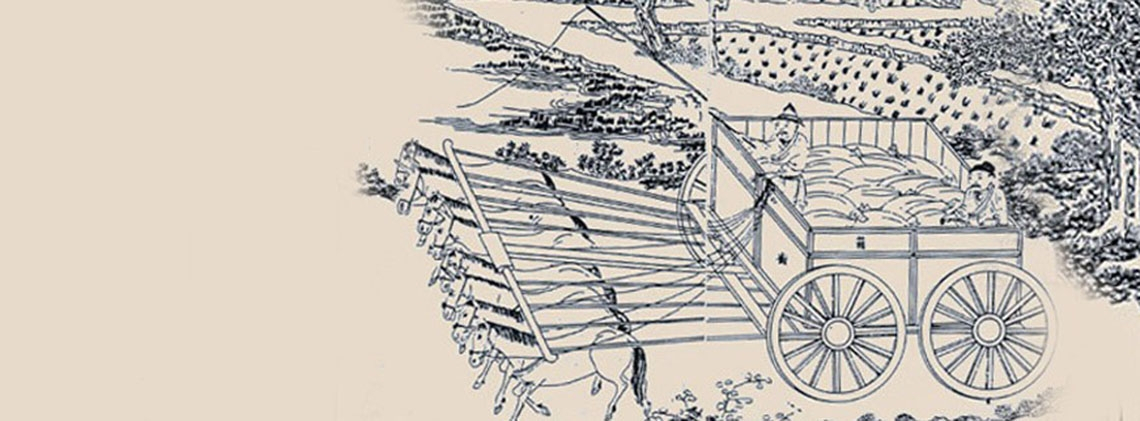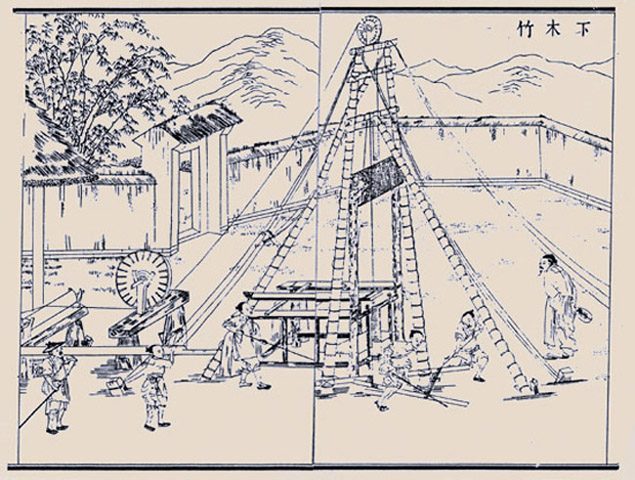
Mechanical Engineering in Ancient China
Splendid
Chi Culture
Topic
Mechanical Engineering in Ancient China
Machines in ancient China included the following eight categories: simple, vehicle and animal-drawn, hydraulic, wind-powered, weaponry and thermal, time keeping, earthquake detection and automated, and flying machines.
Simple machines are the foundation of all complex and large scaled machines. From the point of view of classical mechanics, there are four simple machines: lever, pulley, inclined plane, and screw. From the lever, shadoofs were invented. From the pulley, wheel-and-axles, and cranes were invented. The inclined plane evolved into wedges, or into screws when the wedge was coiled. Construction technology also had simple machines such as ropes, chains, hinges, linkages, cranks, wheels, gears, and springs.
Vehicles included both manual, and animal-drawn carts. They were some of the oldest means of transportation, hauling and also military vehicles.
To use an animal to pull a cart, to operate a mill, or to plow the field, an effective harness first had to be custom made to address the unique shape and form of the animal. The invention of the harness was an outstanding achievement which opened the door to many other developments. The compass-equipped “south-pointing chariot” (zhinan che) and an odometer-equipped chariot called the “li-recording drum chariot” (jili guche) or hodometer were two brilliant inventions that incorporated machines in vehicles. As for animal powered machines, the eight-wheeled ox-powered mill (niuzhuan bamo) and the field mill (chemo) were first invented by the Chinese in ancient times.
Water-powered machines can be divided into three categories: One, those which raise the water level to a new height such as a scoop wheel (gua che), a cylinder wheel (tong che) and a “quare-pallet chain-pump (longgu shui che) used on the farm. Second are those machines powered by the momentum of flowing water, such as the water mill (shui mo) water-powered trip-hammer (shui dui), and water-powered bellows (shui pai). The third type were machines that utilized buoyancy or a difference in water pressures, such as the mechanical boat (lunchuan), salvage boats (dalao chuan) as well as rudders, tillers, and oars.
Wind-powered machines can be divided into two categories. The first type are those that create movement in the air, such as winnowing machines (fengshan che), bellows (fengxiang), etc. Next, are the machines that that are wind-powered, such as the windmill (feng che). In ancient China, people made no distinction between winnowing machines and windmills; they were both called by the same name. Windmills in ancient China probably came from Central Asia; relevant documented sources for them appeared late. The levered-piston style of bellows (lagan huosai shi fengxiang) and similar machines were invented by the Chinese.
There were numerous kinds of weapons in ancient times, such as sabers, spears, swords, polearms, etc., but only a very few were mechanical, such as the bow and arrow, and catapult. After gunpowder was invented, the Chinese word for catapult, which had been written using the radical for rock, now used the radical for fire. Gunpowder was invented between the Tang (618–907) and Song (960–1127) dynasties in China. After its creation, “fire spears,” “fire guns” (artillery), “fire arrows” (rockets), even land mines and torpedoes were invented. China was the first country in the world to advance from the era of cold weaponry to the era of hot (thermal) weaponry.
Time keeping machines were some of the most complex machines the ancient Chinese ever invented. They were unique in that they combined the observation of heavenly bodies with the telling of time, hence they were called the “astronomical clocks.” The time keeping machines greatly influenced the rise of modern sciences. In 117, Zhang Heng of the Eastern Han dynasty constructed an armillary sphere. More than ten years later, in 130, he made a water-powered armillary sphere (orrery), an outstanding achievement at that time.
The possible precursor to all modern seismometers was the houfeng didongyi constructed by Zhang Heng (78–139) in 132 CE. The pivotal component of his seismometer was a column that was an upside-down pendulum whose center of gravity was higher than its center of oscillation. When impacted by the transverse wave of the earthquake, the column would fall toward the direction of the source of the earthquake, and would push the moving parts toward that direction causing the brow of the “dragon” (one component of the machine) to flinch in the corresponding direction. As a result, the brass ball in the mouth of the dragon would fall into the mouth of the toad (another component below).
Kites (both wooden and otherwise) and hot-air balloon were the earliest flying machines made by men. In the whirligig we can see the precursor of the helicopter’s rotor. The spinning-top and the gimbal were the prototypes of all the indispensable gadgets now used in modern marine and aeronautical navigation for steering, positioning, and balancing. The Chinese also should be credited with the rise and advancement of the modern aerospace industry. Among the flying machines made by Europeans at the end of the nineteenth century and the beginning of the twentieth century, some were named “Chinese Kite” and “Chinese Spiral,” proving that the Chinese once contributed to the development of this industry.




